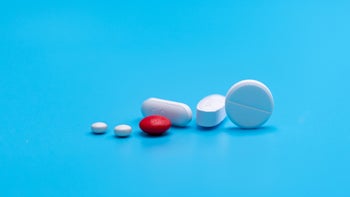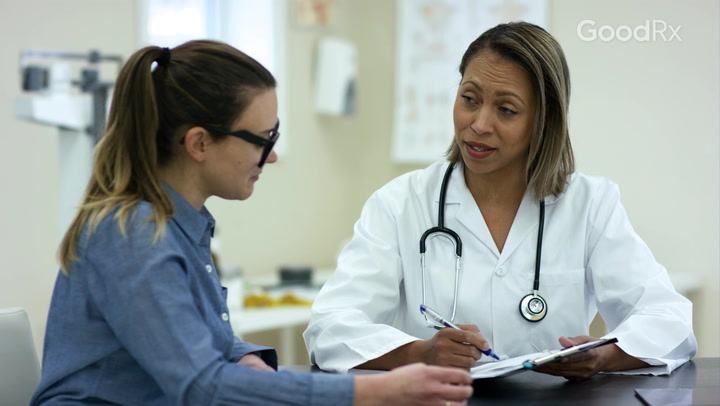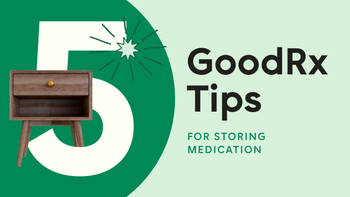
Sublingual Medications: What Are They and How Do You Take Them?
Key takeaways:
Sublingually administered medications are placed under your tongue to dissolve. They’re absorbed by the tissue in this area before directly passing into the bloodstream.
When you compare traditional oral versus sublingual medications, there are many differences. Sublingual medications start to work faster than traditional oral medications. And they don’t have to pass through your gastrointestinal tract or liver.
Examples of sublingually administered medications include nitroglycerin (Nitrostat) tablets and buprenorphine tablets and film. Some supplements, like vitamin B12 and vitamin D, are also available sublingually.
Table of contents

Sublingually administered medications are a type of oral medication. But they may not be the kind you’re used to. For starters, sublingual medications aren’t swallowed. Instead, they’re placed underneath your tongue to dissolve. Then, they’re directly absorbed into your bloodstream.
If your healthcare provider recommends a sublingual medication, it’s important to know about the advantages and disadvantages of this type of medication. It’s also important to know how to use sublingual medications correctly, or you may not get the full benefits.
What does ‘sublingual’ mean, and what are sublingual medications?
The term sublingual refers to something that exists or is placed underneath the tongue. For example, the sublingual gland is located underneath your tongue. It's a salivary gland, or organ that makes saliva. And sublingual medications are those that are placed under your tongue.
Search and compare options
Examples of sublingual medications
Sublingual medications don’t need to be chewed or swallowed to be absorbed by the body. Instead, they dissolve under your tongue. Sublingual products come in many forms, including tablets, films, and sprays. Some examples include:
Nitroglycerin (Nitrostat) tablets
Buprenorphine tablets and film
Buprenorphine/naloxone tablets (Zubsolv) and film (Suboxone)
Zolpidem (Edluar) tablet
Ergotamine (Ergomar) tablet
Desmopressin (Nocdurna) tablet
Apomorphine (Kynmobi) film
Asenapine (Saphris) tablet
Some melatonin tablets and liquid
Some vitamin B12 tablets, lozenges, and liquid drops
Some vitamin D tablets, liquid spray, and liquid drops
How is sublingual administration different from traditional oral and buccal administration?
Traditional oral medications include tablets and capsules that you swallow. These are the most common types of medication. Buccal and sublingual medications are a type of oral medication, but you don’t swallow them. Instead, place them in a specific area in your mouth to be absorbed.
Traditional oral vs. sublingual medications
When you swallow a traditional oral medication, it usually passes through your gastrointestinal (GI) tract and liver before reaching your bloodstream. Once it reaches your blood, it can have its desired effect. But there are many factors that can affect how much of an oral medication makes it to your blood, including:
Your age
Other medical conditions you have
The form of traditional oral medication you’re using (such as a tablet, capsule, liquid solution, etc)
Whether you’ve recently consumed food or other medications
How quickly a medication can move through your GI tract
How well your liver works
Sublingual medications, however, get absorbed by the tissue underneath the tongue. The medication then passes into the bloodstream directly. So they’re not affected by the conditions in the GI tract or liver.
Buccal vs. sublingual
Unlike traditional oral or sublingual medications, buccal medications are placed between your gums and the inside of your cheek. The medication dissolves through the lining of your cheeks. Then it enters the bloodstream. One example of a buccal medication is cold sore medication acyclovir (Sitavig).
Like sublingual medications, buccal medications aren’t affected by your GI tract or liver.
What are the advantages and disadvantages of sublingual administration?
Sublingual medications have advantages and disadvantages. Advantages of sublingual medications include:
They don’t rely on the GI tract and liver. As discussed, sublingual medications get absorbed by the tissue under your tongue and pass directly into the bloodstream. This may be an advantage if you have any health conditions that affect your GI tract or liver.
They generally start working faster than traditional oral medications. This is because they enter the bloodstream quickly. If you’re taking medication that you want or need to work quickly, this is a big advantage. For example, the sublingual formulation of nitroglycerin is good at treating chest pain quickly.
They don’t have to be swallowed. If you have trouble swallowing pills, sublingual options may work better for you.
Disadvantages of sublingual medications include:
It may be difficult to keep the medication underneath your tongue. Sublingual medications shouldn’t be swallowed. Some people may find this difficult to do.
Sublingual administration isn’t possible for all medications. Not all medications can be given sublingually. This includes medications that may irritate the mouth, or ones that may taste bad.
Sublingual administration doesn't work for medications that need to be released slowly. Some tablets or capsules are formulated to prolong the medication’s release into the body. This includes sustained-release products. For these medications, sublingual administration usually isn’t a good idea.
How to take sublingual medications
To get the most out of a sublingual medication, you want to make sure you take it correctly. To do so, you should follow these steps:
Sit upright before taking a sublingual medication. Don’t lie down while the medication is dissolving.
Avoid eating, drinking, or smoking while a sublingual medication is dissolving. Avoid chewing gum, too.
Place the medication under your tongue and leave it there until it’s dissolved. The amount of time it takes to dissolve may vary from one medication to the next.
Avoid swallowing the tablet while you wait for it to dissolve. If you swallow the tablet, it won’t work as quickly and it may not have the desired effect.
Keep in mind: Some sublingual medications (like nitroglycerin) may cause a burning or tingling feeling in your mouth. Talk to your pharmacist about what to expect from your specific sublingual medication.
The bottom line
Sublingually administered medications are dissolved underneath the tongue before passing directly into the bloodstream. Unlike traditional oral medications, they don’t have to pass through the GI tract or liver. This means they work quickly and aren’t affected by how well the GI tract or liver works. Buccal medications work similarly to sublingual medications. But they’re absorbed through the cheek tissue, not the tissue under the tongue.
Why trust our experts?


References
Alagga, A. A., et al. (2022). Drug absorption. StatPearls.
Grewal, J. S., et al. (2022). Anatomy, head and neck, sublingual gland. StatPearls.
Hua, S. (2019). Advances in nanoparticulate drug delivery approaches for sublingual and buccal administration. Frontiers in Pharmacology.
Lippincott Williams & Wilkins, Inc. (2003). Ins and outs of giving drugs transmucosally. Nursing.
Merriam-Webster. (n.d.). Sublingual.
ScienceDirect. (n.d.). Sublingual route.
Verbeeck, R. K., et al. (1998). Effect of hepatic insufficiency on pharmacokinetics and drug dosing. Pharmacy World & Science: PWS.
Was this page helpful?
Related Articles
Browse medications
View AllResearch prescriptions and over-the-counter medications from A to Z, compare drug prices, and start saving.

























